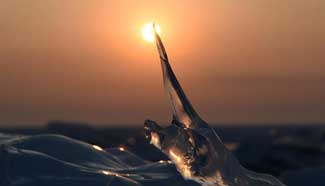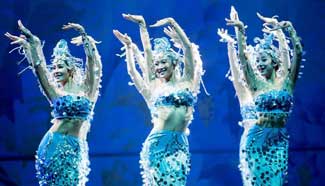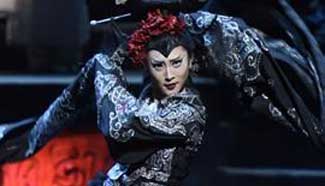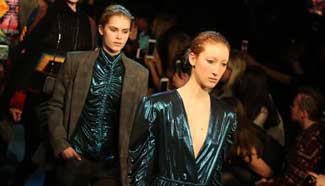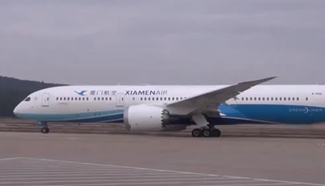KUNMING, Feb. 16 (Xinhua) -- An international team led by a Chinese paleontologist has discovered the first evidence of live births in an animal group thought only to lay eggs.
A 245 million-year-old fossil, collected in the Luoping national geopark in southwest China's Yunnan Province, shows an embryo inside the mother, according to the paper published Wednesday on Nature Communications.
The creature was a member of archosauromorpha, a group of reptiles that evolved some 260 millions years ago and is represented today by birds and crocodiles, said Liu Jun, lead author of the research from Hefei University of Technology, China.
Live birth is often seen in mammals, where the mother has a placenta to nourish the developing embryo, and some groups of lizards and snakes, where the babies "hatch" inside their mother and emerge without a shelled egg. The new discovery shows for the first time that the reproduction method exists among the third group, archosauromorpha.
The fossil belongs to a long-necked marine animal called Dinocephalosaurus, which flourished in shallow seas of South China in the Middle Triassic.
The full size of the animal is three to four meters long, with a neck probably half of the body length. The embryo was found inside the rib cage of the mother, and it faced forward.
"I was so excited when I first saw this embryonic specimen several years ago after the lab preparation finished," said Liu, "I was not sure if the embryonic specimen is the last lunch of the mother or its unborn baby. Upon closer inspection and searching the literature, I realized that something unusual discovered."
Swallowed animals generally face backward because the predator swallows its prey head-first to help it go down its throat. The curled posture of the embryonic skeleton is also typical for vertebrate embryos, Liu said, adding that there is no trace of eggshells preserved around the embryo.
"Information on reproductive biology of archosauromorphs before the Jurassic period was not available until our discovery, despite a history of 260 million years. Our discovery pushes back evidence of reproductive biology in the group by 50 million years," said Jonathan C. Aitchison, one of the study authors from Australia.


